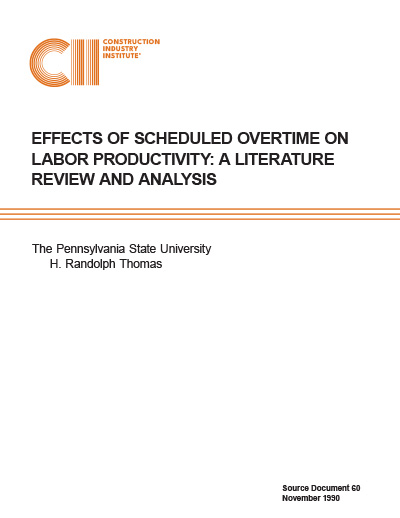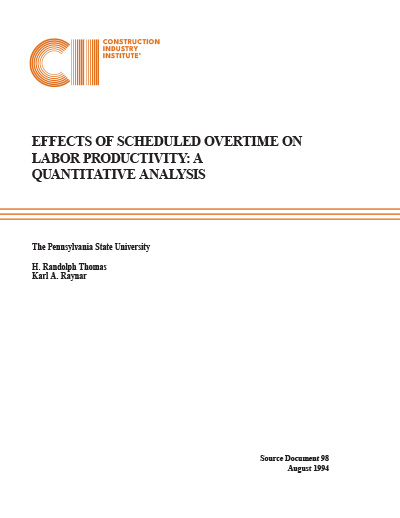
Effects of Scheduled Overtime on Labor Productivity: A Literature Review and Analysis
Construction overtime has been frequently used as an inducement to attract labor and to accelerate schedule performance. While there may be positive short-term benefits to working an overtime schedule, the long-term consequences are typically viewed as detrimental. Understanding the effects of overtime scheduling is quite difficult because the factors affecting productivity in the overtime situation are numerous.
Given that an overtime schedule cannot be avoided, there is little, if any, information available to aid in deciding which type of schedule to follow. Reliable data in this area are nonexistent.
Objective
The objective of this report is to critique the literature describing the effects of an overtime schedule on construction labor productivity. The need for such a summary arises because, relative to the published literature, little is known about the origin of the overtime data, type of project, surrounding circumstances, and amount of data. Yet widespread assumptions have been made that the data and conclusions are reliable. This report clarifies the above aspects for each data set.
Scope
This report focuses on scheduled or extended overtime, that is, an overtime schedule that lasts longer than several weeks. Spot overtime, which is intermittent and is generally not scheduled, is not covered, as the negative aspects are minor relative to the job as a whole.
The focus of the report is on labor productivity in terms of the workhours per unit of output. The influence of the premium time costs associated with overtime are only treated superficially.
The literature was collected from published and unpublished sources. In most instances, the way the data were collected is unknown. In some cases, the origin of the data is also unknown. The graphs are presented to illustrate the flaws in the data and should not be interpreted as validating or invalidating the effects of scheduled overtime on labor productivity.



